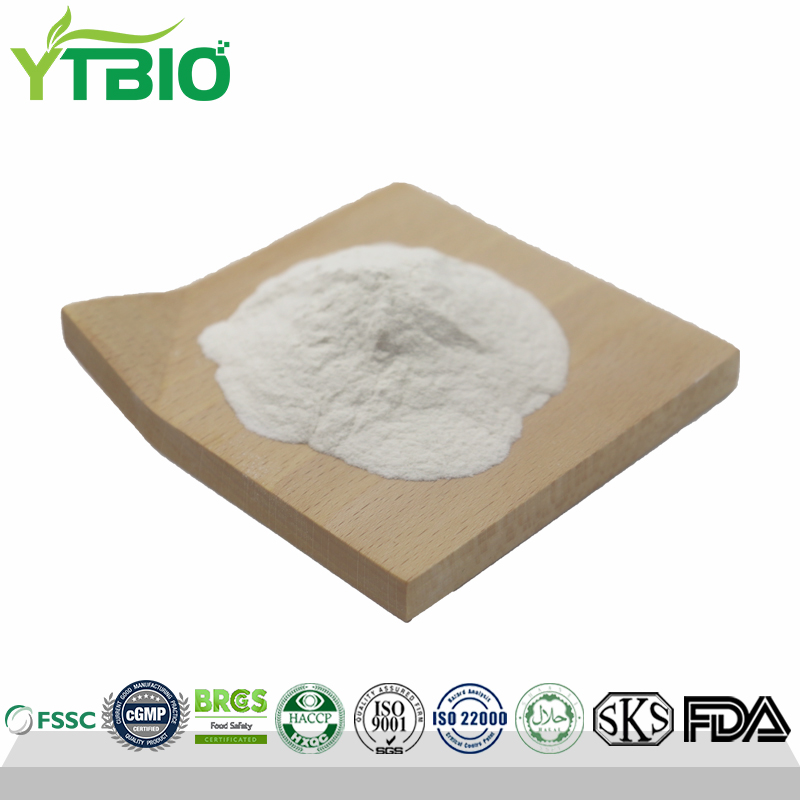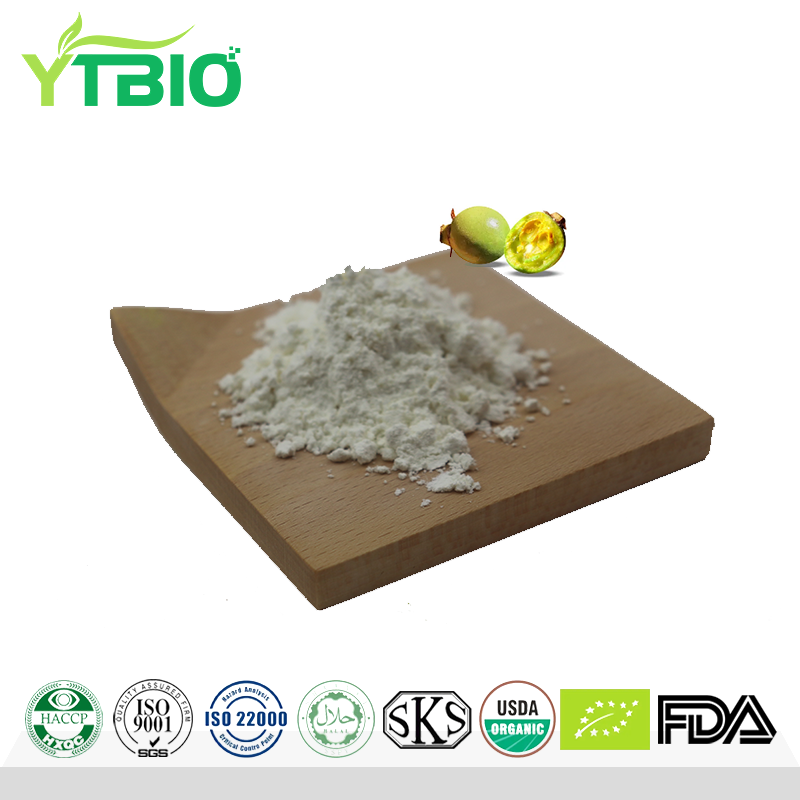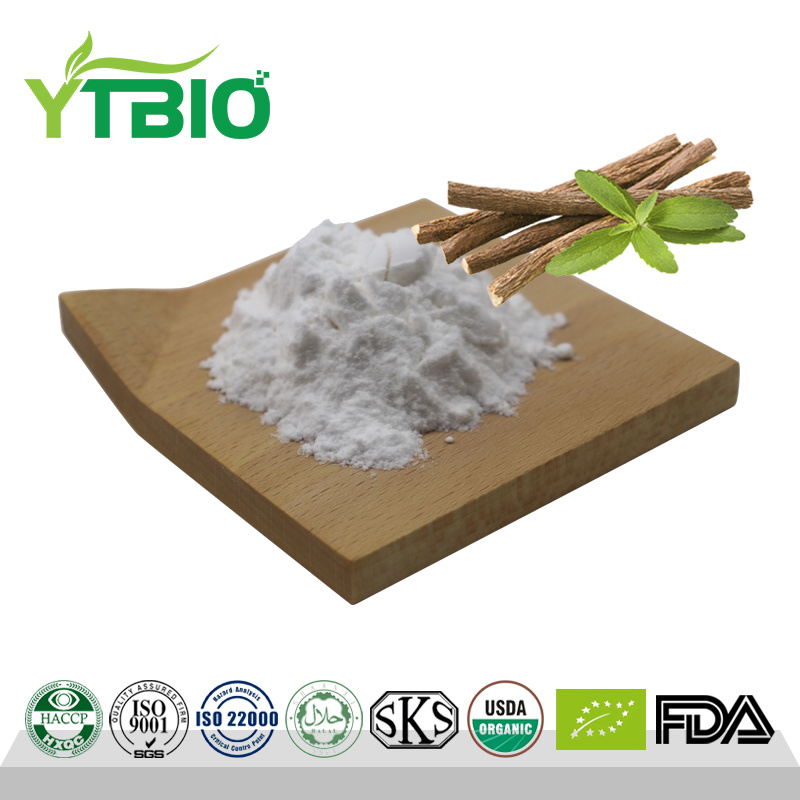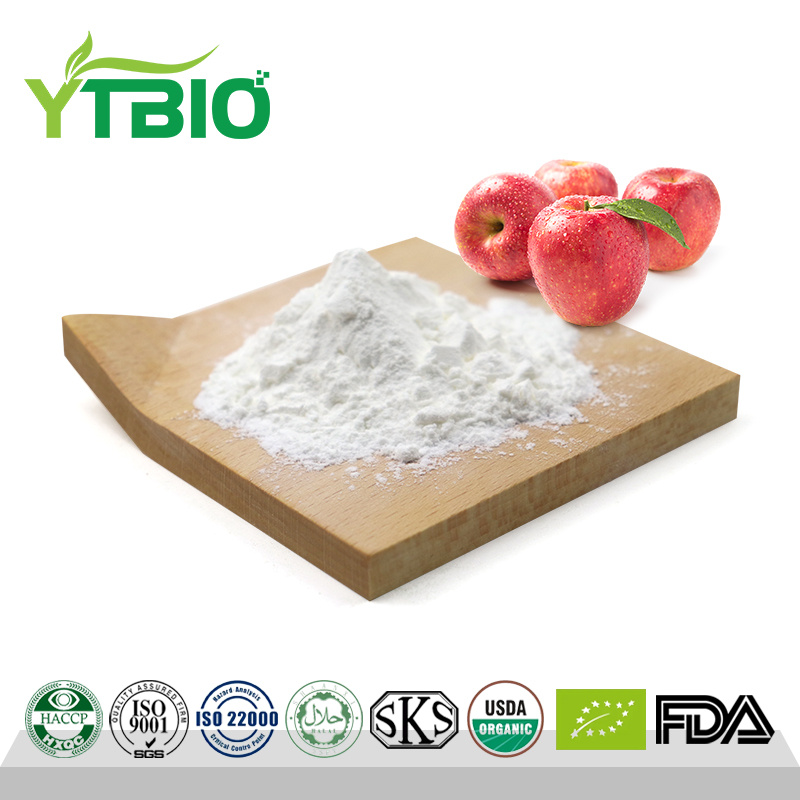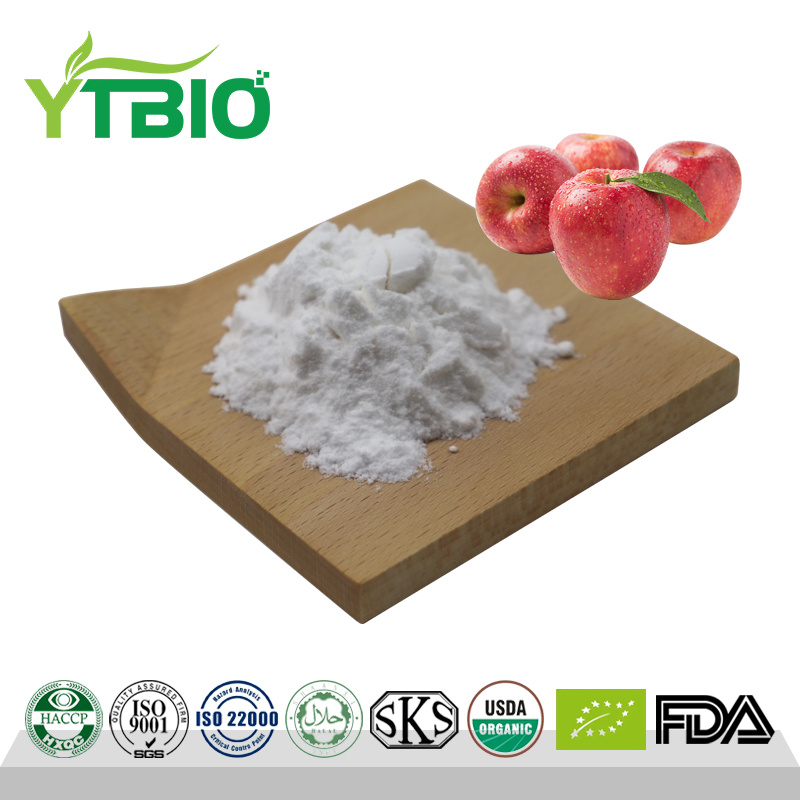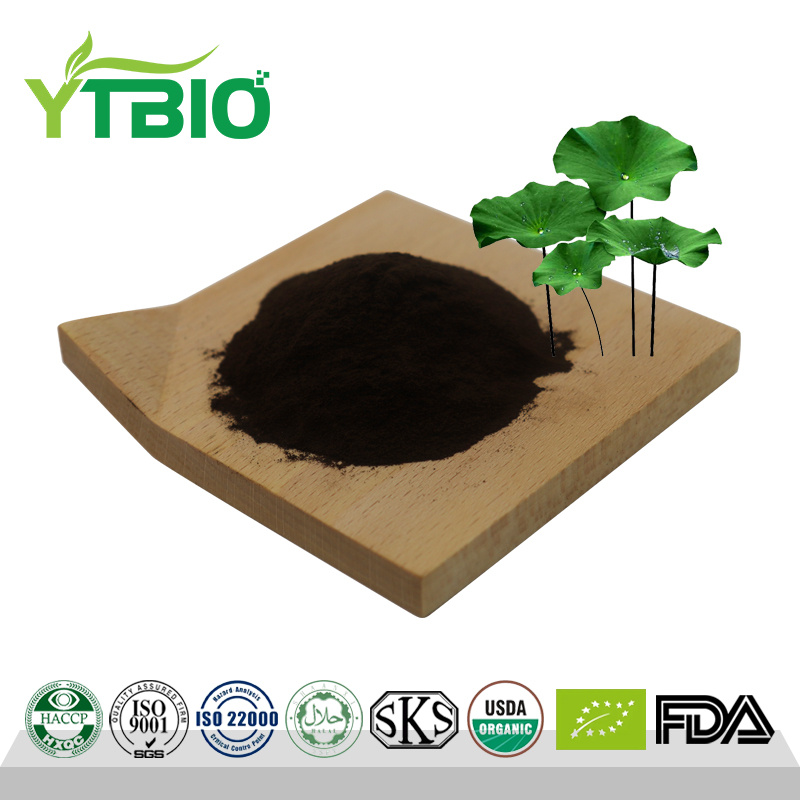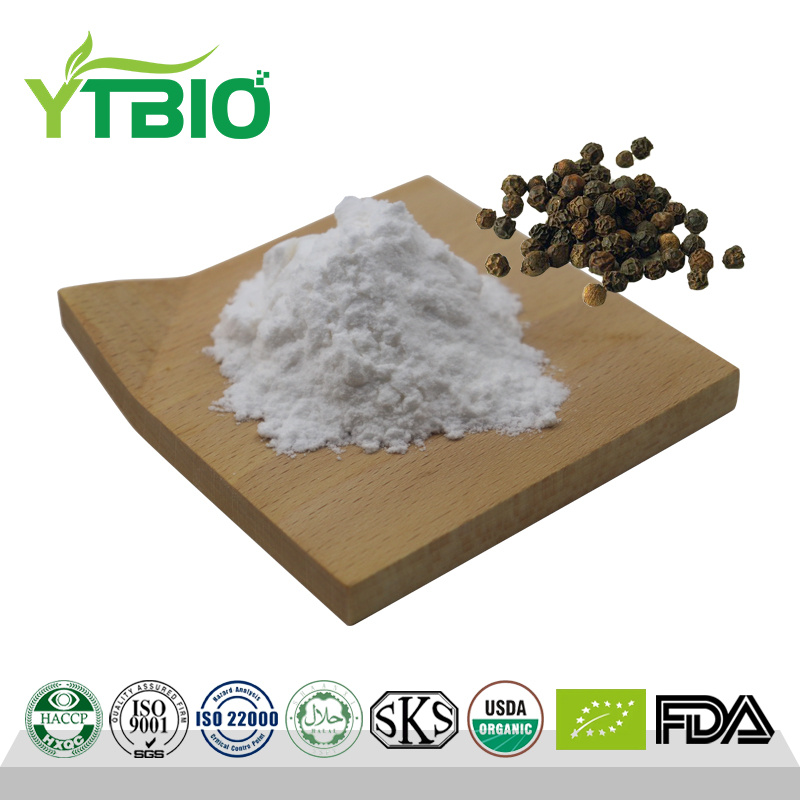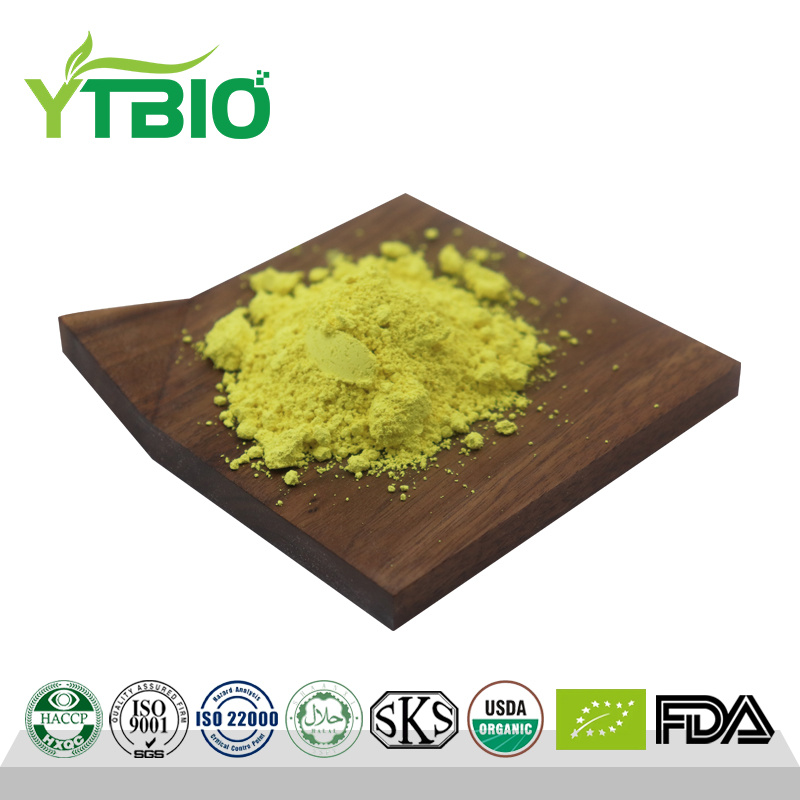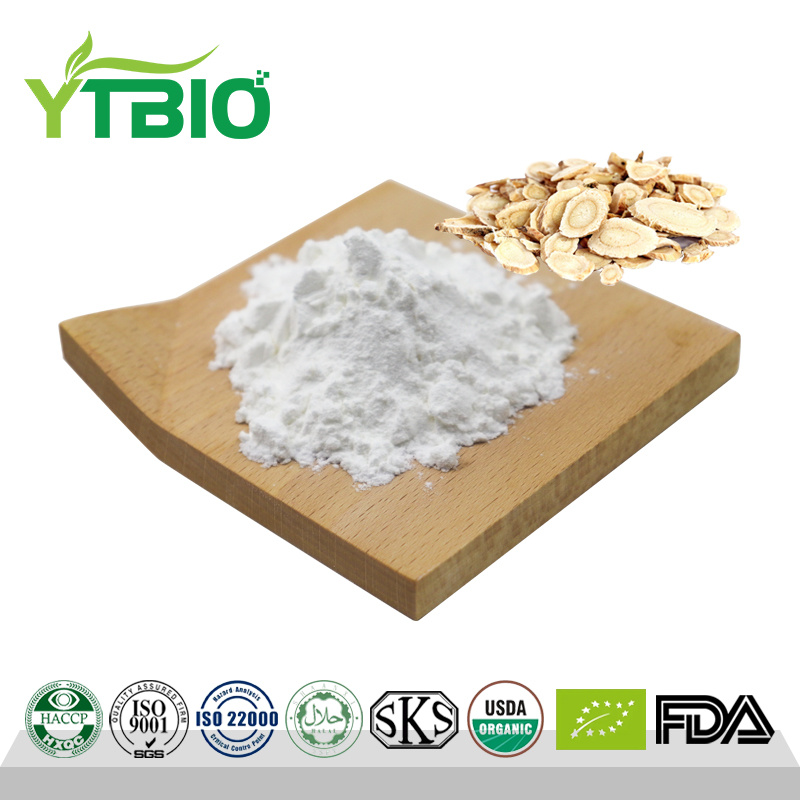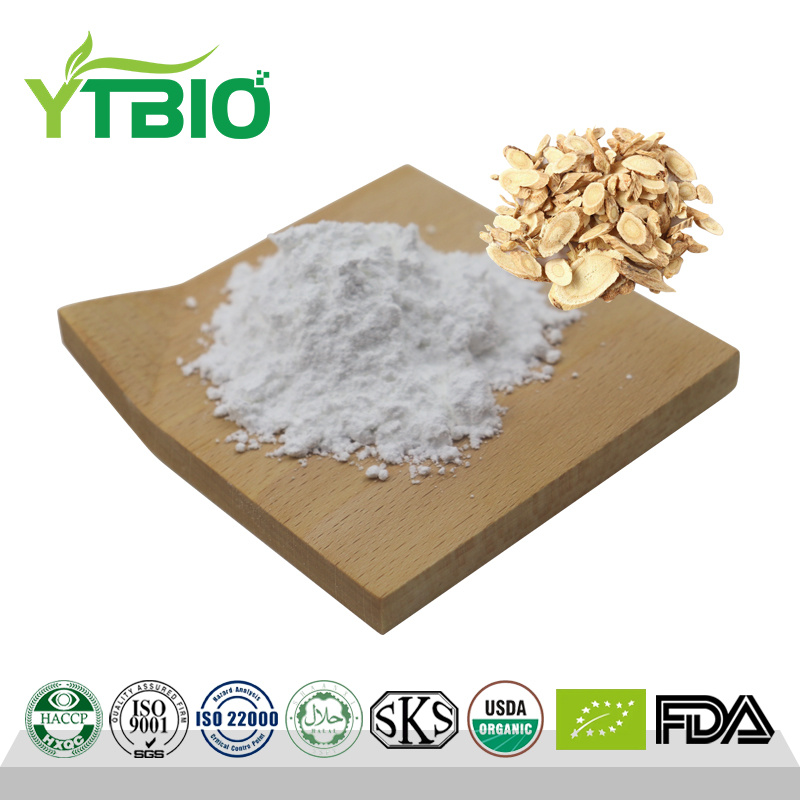CAS 1405-86-3 98% Glycyrrhizic Acid Powder
introduction and characteristics of Glycyrrhizic Acid
Product Introduction
Glycyrrhizic acid is an organic compound derived from the dried rhizomes of the leguminous plants licorice and glycyrrhiza glabra. It is a glycoside composed of glycyrrhetinic acid and 2 molecules of glucuronic acid, and is the main active ingredient of licorice root. White to slightly yellow crystalline powder, odorless, with a special sweetness, about 200 times the sweetness of sucrose. Its sweetness is about 250 times that of granulated sugar. It is widely used as a natural sweetener in food and is also used in other industries such as medicine and cosmetics. It is a therapeutic drug for peptic ulcers, skin diseases, and liver diseases, and has strong pharmacological activity.
Product Teatures●Molecular structure: Glycyrrhizic acid is a pentacyclic triterpenoid compound, composed of one molecule of hydrophobic glycyrrhetinic acid and two molecules of hydrophilic glucuronic acid, and has amphiphilicity.
● Appearance: Pure glycyrrhizic acid is a white crystalline powder, odorless, with a special sweetness, about 200-250 times the sweetness of sucrose, and the sweetness is delayed, but the sweetness lasts for a long time.
● Solubility: It is difficult to dissolve in cold water, easily soluble in hot water, insoluble in oils and fats, and its hot water solution is viscous and jelly-like after cooling, and is soluble in propylene glycol.
● Stability: Stable to heat, alkali and salt. When the pH value is less than or equal to 3, the solution will precipitate.
Physiological functions Of Organic Pea Protein
Antioxidant
It has a relatively strong ability to scavenge superoxide ions and hydroxyl free radicals, and can play an antioxidant role, reduce tissue damage caused by free radicals, and inhibit the aggregation of β-amyloid protein while scavenging free radicals, and play an anti-inflammatory and antioxidant function to slow down neuronal apoptosis.
Anti-inflammatory
Glycyrrhizic acid can inhibit the production of inflammatory factors, such as inhibiting pro-inflammatory factors such as cox-2, il-1β, tnf-α, il-6 in lps-induced mouse inflammation models, reducing inflammatory reactions and inflammatory damage, and is widely used in the treatment of inflammatory diseases such as gastrointestinal inflammation, respiratory inflammation, and skin inflammation.
Anti-allergic
It can inhibit the occurrence of allergic reactions and reduce the body's sensitivity to allergens. For allergic diseases such as allergic rhinitis and allergic asthma, it can alleviate allergic symptoms such as sneezing, runny nose, and wheezing.
Immunomodulation
It can regulate the function of the immune system, enhance the body's immunity, help regulate immune imbalance, and relieve autoimmune diseases such as systemic lupus erythematosus and rheumatoid arthritis.
Liver protection
It has a protective effect on the liver, can inhibit liver cell damage, reduce liver cell damage and protect liver cell function, improve liver function, and is often used to treat liver diseases, liver damage and other diseases.
Antiviral
It has a wide range of antiviral pharmacological activity, and can directly play an antiviral role by inhibiting the attachment and penetration of viruses, inhibiting the replication of viruses, and inhibiting the expression of virus-related proteins. It can also indirectly play an antiviral role by regulating the function of the human immune system.
Anti-fatigue
It shows significant anti-fatigue effects through mechanisms such as improving exercise endurance and reducing blood lactate concentration after exercise. It can increase the level of lg in liver tissue to improve exercise endurance, accelerate the removal of la in the body to relieve muscle soreness, and reduce ck and ldh activity.
Application Of glycyrrhizic acid
Food
Glycyrrhizic acid is used as a sweetener, flavoring agent and flavor enhancer. It is widely used in soft drinks, canned meat, condiments, frozen desserts, candy preserves and other foods. Its sweetness is about 200 times that of sucrose, which can improve the taste of food and prolong the sweetness retention time.
Cosmetics
Glycyrrhizic acid has antioxidant, whitening, and anti-inflammatory effects. It can be used in skin care products and whitening products. It can inhibit the activity of tyrosinase, reduce melanin production, improve skin dullness, and also has the effect of soothing the skin and reducing inflammatory stimulation.
Medicine
Glycyrrhizic acid has multiple pharmacological effects such as anti-inflammatory, antioxidant, antibacterial, antiviral, and immune regulation. It can be used to treat digestive system diseases, respiratory system diseases, skin diseases, etc. Its structure is similar to adrenal cortex hormones, has hormone-like effects, and can be used to treat adrenal cortex insufficiency.
Process flow Of Glycyrrhizic Acid
1. Crushing: Take licorice roots and stems and crush them in a grinder, and pass through a 20-mesh sieve for later use.
2. Extraction: Take 200 kg of the above licorice powder, put it into a 2000L enamel reactor, add 1200 kg of water, slowly heat it to 85-100 ° C, stir and extract for 2 hours, filter, add 1000 kg of water to the residue, extract twice according to the above method, and combine the filtrate three times.
3. Concentration: Pump the extract into the enamel evaporator for concentration. When it is concentrated to 1/5 of the original volume, filter it while hot.
4. Separation: Cool the filtrate to room temperature and add 95% ethanol to make the ethanol content in the extract reach 65%, let it stand for 24 hours, then filter it to remove plant protein and polysaccharides.
5. Precipitation: Take the licorice filter liquid, put it into a sedimentation tank, add concentrated sulfuric acid to adjust the pH to 3, and glycyrrhizic acid will precipitate. Filter, wash twice with deionized water, and then vacuum dry. 6. Refining: Add 3 times the amount of acetone to the glycyrrhizic acid precipitate, heat and reflux for extraction for 3 hours, filter, reflux the residue and extract twice, combine the 3 reflux extracts, filter, recover acetone, and obtain wet glycyrrhizic acid.
7. Drying: Put the wet dry glycyrrhizic acid into the drying room for drying, start to control the temperature at 45℃, dry for 1 hour, slowly increase the temperature to 85-95℃, and when it is almost dry, increase the temperature to 100℃, and finally bake at 105℃ for 5 minutes.
8. Crushing: Put the dried glycyrrhizic acid into a grinder and crush it, pass through a 60-80 mesh sieve to obtain glycyrrhizic acid powder.


